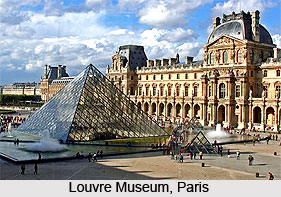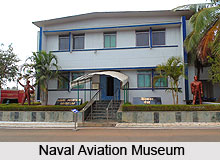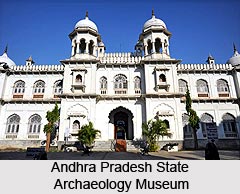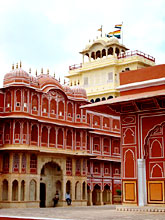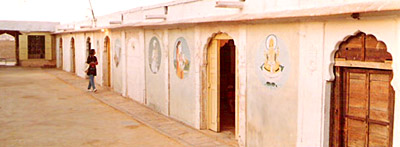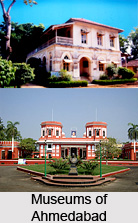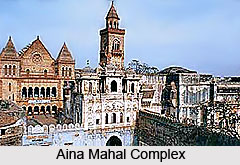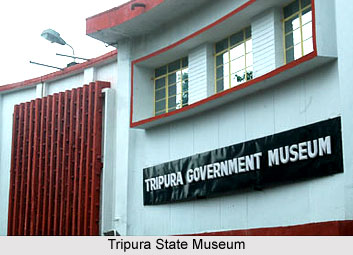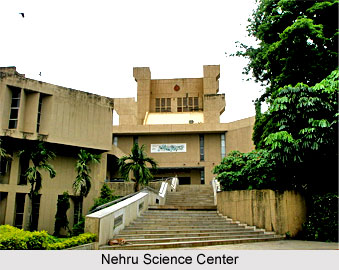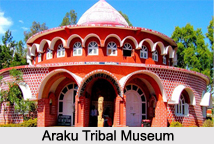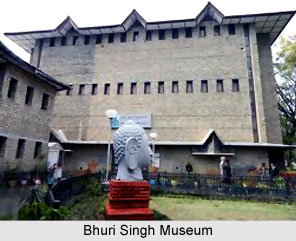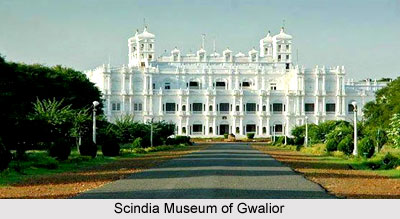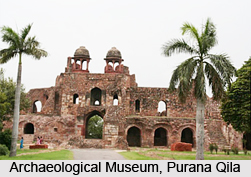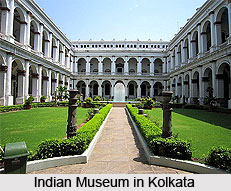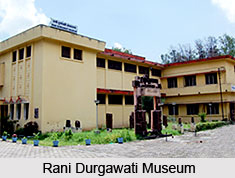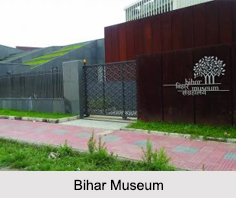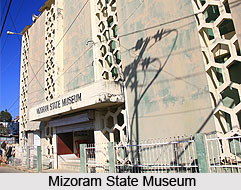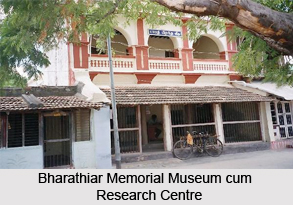 Bharathiar Memorial Museum cum Research Centre located at Puducherry was established commemorating the renowned Tamil poet and freedom fighter Subramanya Bharathiyar, popularly entitled the sobriquet "Mahakavi", literally the supreme poet. The museum was established in the very abode of Bharathiyar, where the poet took refuge from the ruling British Raj, from 1908 to 1918, when Puducherry (erstwhile Pondicherry) was governed by the French regime. During this period of his political asylum in the town, Bharathiyar penned some of his compositions such as "Kuyil Pattu", "Kannan Pattu" and "Panchali Sabatham". The quaint French colony of Pondicherry had become the source of the poet"s inspiration and he wrote some of his most outstanding literary works, encompassing patriotic as well as romantic compositions, from this very place that presently houses his memorial museum. The Bharathiar Memorial Museum cum Research Centre, today, houses over 17,000 manuscripts, handwritten books and journals, of which nearly 3,000 contain everything written by and related to Bharathiyar, along with rarest of rare photographs related to the poet.
Bharathiar Memorial Museum cum Research Centre located at Puducherry was established commemorating the renowned Tamil poet and freedom fighter Subramanya Bharathiyar, popularly entitled the sobriquet "Mahakavi", literally the supreme poet. The museum was established in the very abode of Bharathiyar, where the poet took refuge from the ruling British Raj, from 1908 to 1918, when Puducherry (erstwhile Pondicherry) was governed by the French regime. During this period of his political asylum in the town, Bharathiyar penned some of his compositions such as "Kuyil Pattu", "Kannan Pattu" and "Panchali Sabatham". The quaint French colony of Pondicherry had become the source of the poet"s inspiration and he wrote some of his most outstanding literary works, encompassing patriotic as well as romantic compositions, from this very place that presently houses his memorial museum. The Bharathiar Memorial Museum cum Research Centre, today, houses over 17,000 manuscripts, handwritten books and journals, of which nearly 3,000 contain everything written by and related to Bharathiyar, along with rarest of rare photographs related to the poet.
The Bharathiar Memorial Museum cum Research Centre, located on No. 20, Eswaran Dharamaraja Koil Street in Puducherry is almost a place of pilgrimage today for the Tamil people. Having been under closure for nearly 5 years, it was restored and renovated by the Government of Puducherry, as a Grade I heritage structure. The restoration work was done at a cost of Rs. 1 Crore, undertaken by the Indian National Trust for Art and Cultural Heritage (INTACH) in 2014. The museum"s architecture is a blend of French and traditional Tamil architectures. It was closed to tourists in November 2009, and the museum"s collection and assets of Subramanya Bharathiyar were shifted to the Subbiah memorial house and library on Vellala Street. The renovation work was delayed due to procedural wrangles. This closure was a considerable loss for researchers and scholars, who wanted to get a deep insight into the literary works of the great poet, let alone admirers and tourists. Scholars and writers believe that the manuscripts housed in this museum show word substitutions made by Bharathiyar, thus allowing an invaluable in-depth insight into the thought process of one of the greatest Tamil poets and to understand why he preferred a certain word over another. It has been renovated using traditional materials like Madras Terrace roofing, has a seminar hall with audio-visual and WiFi facilities for research scholars. Thus, the restored Bharathiar Memorial Museum cum Research Centre is the abode for those seeking the fount of the poet Bharathiyar"s inspiration of his works during the freedom struggle, which is judged as his most creative period in addition to being a prosperous era of Tamil Literature.
Related Articles:
Puducherry
Tamil Literature
Subramanya Bharathiyar
French Possession in South India
Museums of Puducherry
Puducherry Museum, Puducherry
